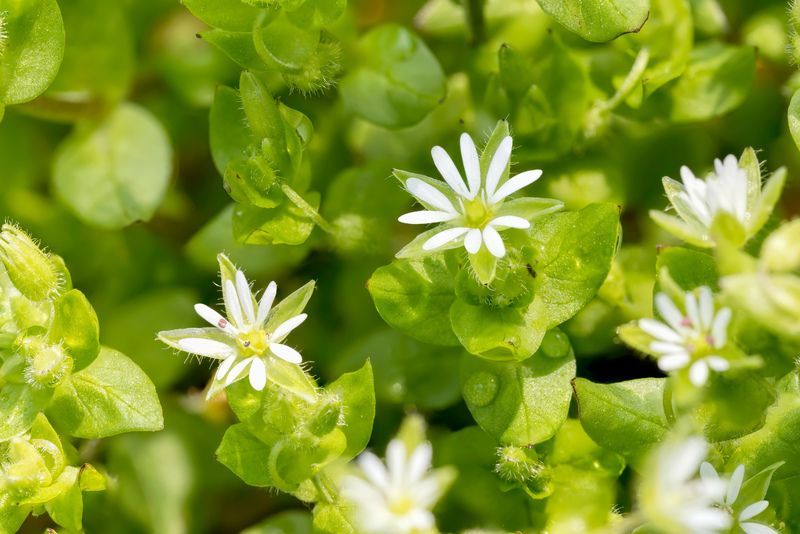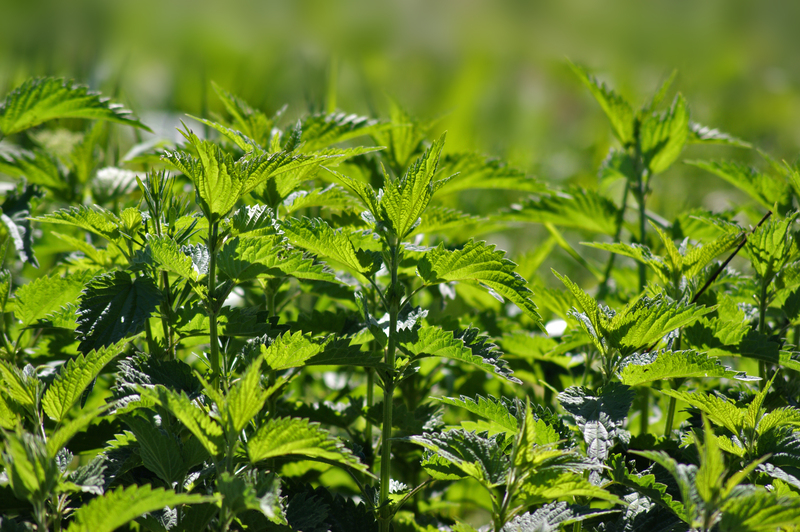Understanding the basics of container gardening
Posted on 26/08/2025
Understanding the Basics of Container Gardening
Container gardening has surged in popularity as more people seek flexible, space-saving solutions to cultivate their love of plants. Whether you have a sprawling backyard or a compact balcony, learning about container gardening basics can open new doors to horticultural joy. In this comprehensive guide, we'll explore everything you need to know to start and maintain successful container gardens.

What is Container Gardening?
Container gardening is the practice of growing plants exclusively in containers--such as pots, tubs, or barrels--rather than directly in the ground. This method offers unparalleled flexibility, making it possible to garden in urban apartments, patios, rooftops, or even indoors.
- Adaptable to any space, no matter how small
- Ideal for beginners or those with limited mobility
- Can be as simple or elaborate as you wish
Why Choose Container Gardening?
Exploring the fundamentals of container gardening reveals a host of benefits, including:
- Mobility: Easily move plants to find ideal light or protect from harsh weather.
- Soil Control: Select the best soil mix for every plant, reducing pests and disease.
- Accessibility: No need for extensive ground preparation or weeding.
- Season Extension: Bring plants indoors to prolong their growing season.
- Aesthetic Appeal: Add instant beauty to balconies, patios, and windowsills.
Choosing the Right Containers
Selecting appropriate containers is one of the essential steps when starting your container gardening journey.
Consider Container Material
- Terracotta: Classic and breathable, but dries out quickly and is breakable.
- Plastic: Lightweight, affordable, and retains moisture well, but may lack style.
- Glazed ceramic: Attractive and holds water well, though heavier and often costlier.
- Metal: Modern look but can heat up and cause root damage in direct sun.
- Wood: Natural look and insulation, though may rot over time unless treated.
Size Matters
The size of your container significantly impacts plant health. Choose containers that provide adequate space for roots to grow and sufficient soil to retain moisture.
- Small pots suit herbs and annuals.
- Larger pots or tubs are best for vegetables, shrubs, or mixed displays.
- Ensure all containers have proper drainage holes to prevent waterlogging.
Picking the Best Plants for Containers
The varieties of plants suitable for container gardens are nearly endless. However, successful container gardening starts with choosing plants that will thrive in your environment and available space.
Types of Plants That Excel in Containers
- Herbs: Basil, parsley, mint, chives, cilantro, rosemary.
- Vegetables: Tomatoes, lettuce, peppers, radishes, carrots, spinach.
- Flowers: Petunias, marigolds, geraniums, pansies, impatiens.
- Foliage Plants: Ferns, hostas, caladium, coleus.
- Dwarf fruit trees & shrubs: Blueberries, strawberries, lemon or fig trees in large containers.
Choose the Right Plant, Right Location
Before planting, assess how much sunlight your space receives. Sun-loving plants thrive in open, south-facing spots, while shade-tolerant species are perfect for balconies or patios with less sun.
Understanding Potting Mix and Soil
One of the most important elements in container gardening is choosing the right potting mix. Unlike garden soil, containers need lightweight, well-draining, and nutrient-rich media.
What Makes a Good Potting Mix?
- Lightweight: Promotes root growth and prevents compaction.
- Retains Moisture: Contains organic matter like peat moss or coir.
- Well-Draining: Includes perlite, vermiculite, or sand to avoid waterlogged roots.
- Nutrient-Rich: Blends with slow-release fertilizers or compost for ongoing plant health.
Never use garden soil by itself in pots; it is too dense and can harbor pests and diseases. Opt for pre-mixed potting soil or create your own blend for best results.
Planting Your Container Garden
With your containers and potting mix ready, it's time to plant! Here's a step-by-step guide to help you start your journey in container gardening.
Step-by-Step Planting Process
- Prepare your containers: Clean pots and ensure they have unobstructed drainage holes.
- Layer the bottom: Add a thin layer of gravel or broken pottery shards if desired, but it's not essential for drainage if the potting mix is correct.
- Fill with potting mix: Leave space at the top to avoid overflow when watering.
- Arrange your plants: Place taller plants in the center or back, trailing types toward the edges.
- Plant and firm: Settle the plants at the correct depth; gently firm the soil around the roots.
- Water thoroughly: Give a deep initial soak to settle the soil.
Caring for Your Container Garden
The basics of growing plants in containers are simple, but consistent care is crucial for healthy, thriving plants.
Watering
- Containers often dry out more quickly than ground beds. Check soil moisture daily in hot weather.
- Water until it drains from the bottom. Avoid letting roots sit in water.
- Self-watering planters can help maintain consistent moisture, especially if you travel.
Feeding
- Use slow-release fertilizers or liquid feeds to supply ongoing nutrients.
- Monitor for signs of nutrient deficiency, such as yellowing leaves or stunted growth.
- Refresh the top inch of potting mix annually with compost or new soil.
Pruning and Deadheading
- Regularly remove faded flowers to encourage more blooms.
- Trim back leggy stems to keep plants compact and healthy.
- Harvest herbs and vegetables frequently for best flavor and continuous production.
Pest and Disease Management
- Inspect plants regularly for aphids, spider mites, and other pests.
- Choose disease-resistant varieties whenever possible.
- Use organic treatments or remove affected leaves by hand.
- Clean and sterilize pots between uses to reduce disease risk.
Seasonal Tips for container gardening
Container gardening offers the flexibility to adapt with the seasons. Here are some practical tips for year-round success:
Spring
- Start seeds indoors or outdoors, depending on your climate.
- Refresh potting mix and check containers for damage.
- Gradually introduce tender plants to outdoor conditions.
Summer
- Water frequently, especially during heatwaves.
- Pinch back plants to encourage bushy growth.
- Feed regularly during the growing season.
Fall
- Swap out summer annuals for cool-loving pansies or ornamental cabbages.
- Move cold-sensitive plants indoors before the first frost.
- Reduce watering and feeding as plant growth slows.
Winter
- Protect outdoor containers from freezing by grouping together or wrapping in burlap.
- Keep indoor plants near windows with bright light, but avoid chilly drafts.
- Reduce watering, as most plants need less during dormancy.
Creative Container Gardening Ideas
Learning the principles of container gardening lets you unleash your creativity! Mix and match colors, heights, and textures for stunning displays. Here are some inspiring ideas:
- Edible gardens: Grow herbs and veggies for an attractive and useful arrangement.
- Themed planters: Try a pollinator-friendly bee garden or a sensory planting with fragrant herbs.
- Vertical gardening: Use wall-mounted containers or stacking pots to maximize limited space.
- Seasonal displays: Switch out flowers or foliage to celebrate spring, summer, autumn, or winter.
- Repurpose containers: Recycle buckets, boots, or baskets for a quirky, eco-friendly touch.

Common Mistakes & How to Avoid Them
Even with the basics covered, beginners in container gardening sometimes stumble. Be aware of these common pitfalls:
- Overwatering: Leads to root rot. Check soil before watering!
- Underpotting: Plants outgrow their containers quickly. Choose bigger pots when in doubt.
- Poor drainage: Always use containers with holes at the bottom.
- Crowding: Too many plants in one container compete for nutrients and space.
- Neglecting feeding: Plants in containers need more frequent fertilization than those in the ground.
Conclusion: Mastering the Basics of Container Gardening
With a keen understanding of container gardening basics, anyone can cultivate a vibrant, lush garden in even the smallest of spaces. Start simple--with a few pots of herbs or a colorful floral display--and as your confidence grows, expand your repertoire and get creative!
Remember: The foundation of thriving container plants lies in choosing the right container and potting mix, selecting suitable plants, and providing consistent care. Embrace experimentation, enjoy the process, and watch your little oasis flourish--no matter where you garden!
By following these essential tips and techniques, you'll be well on your way to enjoying the beauty and rewards of container gardening all year round.

